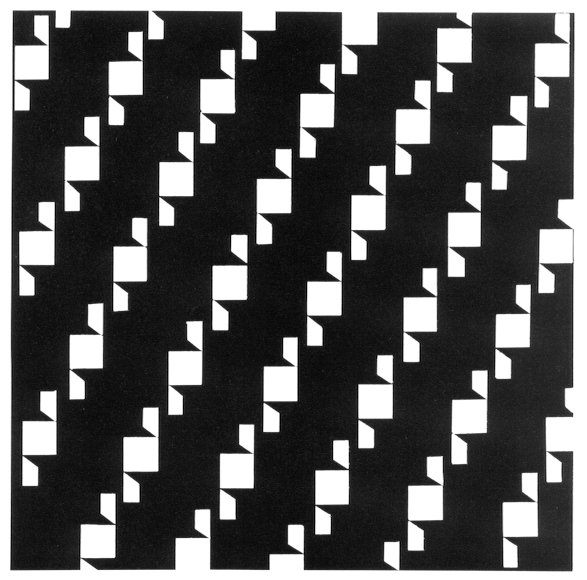|
In the limited scope of the goal and conditions mentioned above, I put the multiplication of units in operation with students. As quite a number of students participated in this, a lot of data was gathered. It was classified in seven parts according to type, as in the following (the first type, the random arrangement, is excluded from the topics for further discussion hereafter). - random arrangement
Let me give examples as a result of examining the above subjects.
(i) The lineal extension This is a linearly developed shape as appeared on page
100. It is the simplest manipulation, for all you have to do is to
combine units in the same way and in one direction. The use of units is
not limited to one simple row. You can cause variations in the lineal KOHSEI
(Basic Art & Design) in many ways (Figs. 158,
159). In some KOHSEI (Basic Art &
Design), as you see in the next Figure 160,
elements of the plane-surface extension as much as those of the lineal
one are strongly expressed. It is an example of transition between lineal
and plane-surface extension.
|
|||
